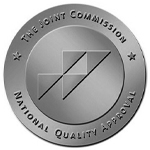(This article by Carolyn Coss, Audiologist and Speech Language Pathologist at Keystone Audiology and Speech, first appeared in the Public Opinion Newspaper on October 11, 2013. Click here to read it on www.publicopiniononline.com.)
Hearing loss is frequently associated with old age, but it doesn’t have to be. Today, poor hearing can be helped in a number of ways and the technology is changing to keep up with the needs of those who lack this important sense.
Protect your ears
Long-term exposure to noise over many years can lead to significant hearing loss. Damage to the ear from excessive noise is cumulative – each insult from noise, whether a loud concert, lawn mower, gunfire or machinery, will leave a mark on the delicate structures of the inner ear. The same changes in blood vessels associated with high blood sugar, high blood pressure or high cholesterol that cause heart disease or stroke can affect the tiny blood vessels of the inner ear, causing hearing loss as well.
Damage to the nerve endings of the auditory nerve, no matter what the cause, cannot be reversed. The best way to prevent hearing damage is to protect it from excess noise by using plugs or muffs. Sounds like lawn mowers are not important to listen to and can rob you of your ability to hear your spouse, children or grandchildren later in life.
Hearing aid concerns
While prevention is the best protection, you may still find yourself having difficulty hearing. Sometimes it’s necessary to help your hearing along. Very few patients actually want to wear a hearing aid at first and there are many fears that contribute to their reluctance. Some patients are concerned that others will be able to see it. Some hearing aids are so small and discreet that they are rarely noticed while other hearing aids for more severe hearing losses might be more visible. Often, more noticeable than a hearing aid is a person without one who answers inappropriately, does not respond or frequently has to ask people to repeat.
Other patients don’t want to obtain hearing aids because they are afraid they will not be able to use it. Current digital technology with automatic features makes hearing aid use very easy. For many others, cost of hearing aids is a concern but there are programs available that help make hearing aids more affordable for those on a limited income.
Improve quality of life
For patients with significant hearing loss, communication becomes very difficult. Family members can become frustrated and patients may become isolated because they just do not understand in social situations. Most users report that wearing hearing aids make communications easier, allowing them to participate more fully in family and social situations.
It’s easy to get fitted for one. The first step is a comprehensive hearing evaluation to determine the severity and type of hearing loss. If a medical condition, such as ear infection or wax impaction, exists, appropriate steps can be taken to address those problems.
If a hearing aid is recommended, a hearing aid evaluation will be suggested. At that time, all the options related to hearing aids – including styles and features – will be discussed and the aid can be ordered. On the day of the fitting, the audiologist will program the hearing aid to mirror the hearing loss and for listening comfort. Use, care and troubleshooting will be explained and demonstrated. It is not unusual for patients to return for a fine-tuning after adjusting to the hearing aids for several weeks.
Carolyn Coss is an audiologist and speech language pathologist at Keystone Audiology and Speech, Chambersburg.




